Lot details Northeastern India, Bihar, 11th century. The six-armed pot-bellied god of auspicious beginnings and granter of fulfillment is shown here in a dancing pose on a double lotus base, flanked by four attendants, holding a battle ax, a bowl of sweets and an arched snake, his head slightly turned in a joyful expression, the base carved with a mouse as his vehicle (vahana). The arched snake also cleverly forms the mandorla which is flanked by two elaborately carved apsaras. Expert’s note: Ganesha has a mythical connection with snakes, which is only seldomly found in statues with his image. The story begins with Ganesha eating a lot of candies until his belly became very big and hard to move. When he was going home late in the night, Ganesha rode a mouse as his vahana. In the journey, Ganesha was interrupted by a snake that frightened him and so he fell. Ganesha could not stand up again because his belly was too full. This incident was observed by the moon that laughed out loud. Ganesha was offended by that and cursed the moon to disappear. This made the world instantly dark so that there were many requests to Ganesha to cancel the curse, and he was able to change it so that the moon now only disappears once a month. (Dwyer, 2015, page 270) Provenance: A private collection in Bologna, Italy, c. 1995-1998. Leonardo Vigorelli, Bergamo, acquired from the above. Leonardo Vigorelli is a retired Italian art dealer and noted collector, specializing in African and ancient Hindu-Buddhist art. After studying anthropology and decades of travel as well as extensive field research in India, the Himalayan region, Southeast Asia, and Africa, he founded the Dalton Somaré art gallery in Milan, Italy, which today is being run by his two sons. Condition: Very good condition, commensurate with age. Extensive wear, signs of weathering and erosion, soil encrustations, some losses, nicks and surface scratches, structural cracks. The present sculpture bears the telltale signs of raised edges rubbed smooth where beholders were gripped with the overt temptation to caress the forehead, trunk and protruding belly. Dimensions: Height 61.5 cm (excl. base) and 63.7 cm (incl. base) With a modern metal base. Literature comparison: Compare a related six-armed sandstone sculpture of Ganesha, dated to the 11th century, Madhya Pradesh, in the collection of the Los Angeles County Museum of Art, accession number M.88.221. Auction result comparison: Type: Closely related Auction: Christie’s New York, 19 September 2002, lot 42 Price: USD 50,190 or approx. EUR 81,000 converted and adjusted for inflation at the time of writing Description: A Black Stone Stele of Ganesha, Northeastern India, Pala Period, 10th/11th century Expert remark: Compare the closely related pose, decorations, stone, and size (60.9 cm) Auction result comparison: Type: Closely related Auction: Christie’s New York, 16 September 2008, lot 377 Price: USD 68,500 or approx. EUR 92,500 converted and adjusted for inflation at the time of writing Description: A Black Stone Stele of Ganesha, Northeastern India, Pala Period, 11th century Expert remark: Compare the closely related pose, decorations and stone.
Lot details Northeastern India, Bihar, 11th century. The six-armed pot-bellied god of auspicious beginnings and granter of fulfillment is shown here in a dancing pose on a double lotus base, flanked by four attendants, holding a battle ax, a bowl of sweets and an arched snake, his head slightly turned in a joyful expression, the base carved with a mouse as his vehicle (vahana). The arched snake also cleverly forms the mandorla which is flanked by two elaborately carved apsaras. Expert’s note: Ganesha has a mythical connection with snakes, which is only seldomly found in statues with his image. The story begins with Ganesha eating a lot of candies until his belly became very big and hard to move. When he was going home late in the night, Ganesha rode a mouse as his vahana. In the journey, Ganesha was interrupted by a snake that frightened him and so he fell. Ganesha could not stand up again because his belly was too full. This incident was observed by the moon that laughed out loud. Ganesha was offended by that and cursed the moon to disappear. This made the world instantly dark so that there were many requests to Ganesha to cancel the curse, and he was able to change it so that the moon now only disappears once a month. (Dwyer, 2015, page 270) Provenance: A private collection in Bologna, Italy, c. 1995-1998. Leonardo Vigorelli, Bergamo, acquired from the above. Leonardo Vigorelli is a retired Italian art dealer and noted collector, specializing in African and ancient Hindu-Buddhist art. After studying anthropology and decades of travel as well as extensive field research in India, the Himalayan region, Southeast Asia, and Africa, he founded the Dalton Somaré art gallery in Milan, Italy, which today is being run by his two sons. Condition: Very good condition, commensurate with age. Extensive wear, signs of weathering and erosion, soil encrustations, some losses, nicks and surface scratches, structural cracks. The present sculpture bears the telltale signs of raised edges rubbed smooth where beholders were gripped with the overt temptation to caress the forehead, trunk and protruding belly. Dimensions: Height 61.5 cm (excl. base) and 63.7 cm (incl. base) With a modern metal base. Literature comparison: Compare a related six-armed sandstone sculpture of Ganesha, dated to the 11th century, Madhya Pradesh, in the collection of the Los Angeles County Museum of Art, accession number M.88.221. Auction result comparison: Type: Closely related Auction: Christie’s New York, 19 September 2002, lot 42 Price: USD 50,190 or approx. EUR 81,000 converted and adjusted for inflation at the time of writing Description: A Black Stone Stele of Ganesha, Northeastern India, Pala Period, 10th/11th century Expert remark: Compare the closely related pose, decorations, stone, and size (60.9 cm) Auction result comparison: Type: Closely related Auction: Christie’s New York, 16 September 2008, lot 377 Price: USD 68,500 or approx. EUR 92,500 converted and adjusted for inflation at the time of writing Description: A Black Stone Stele of Ganesha, Northeastern India, Pala Period, 11th century Expert remark: Compare the closely related pose, decorations and stone.

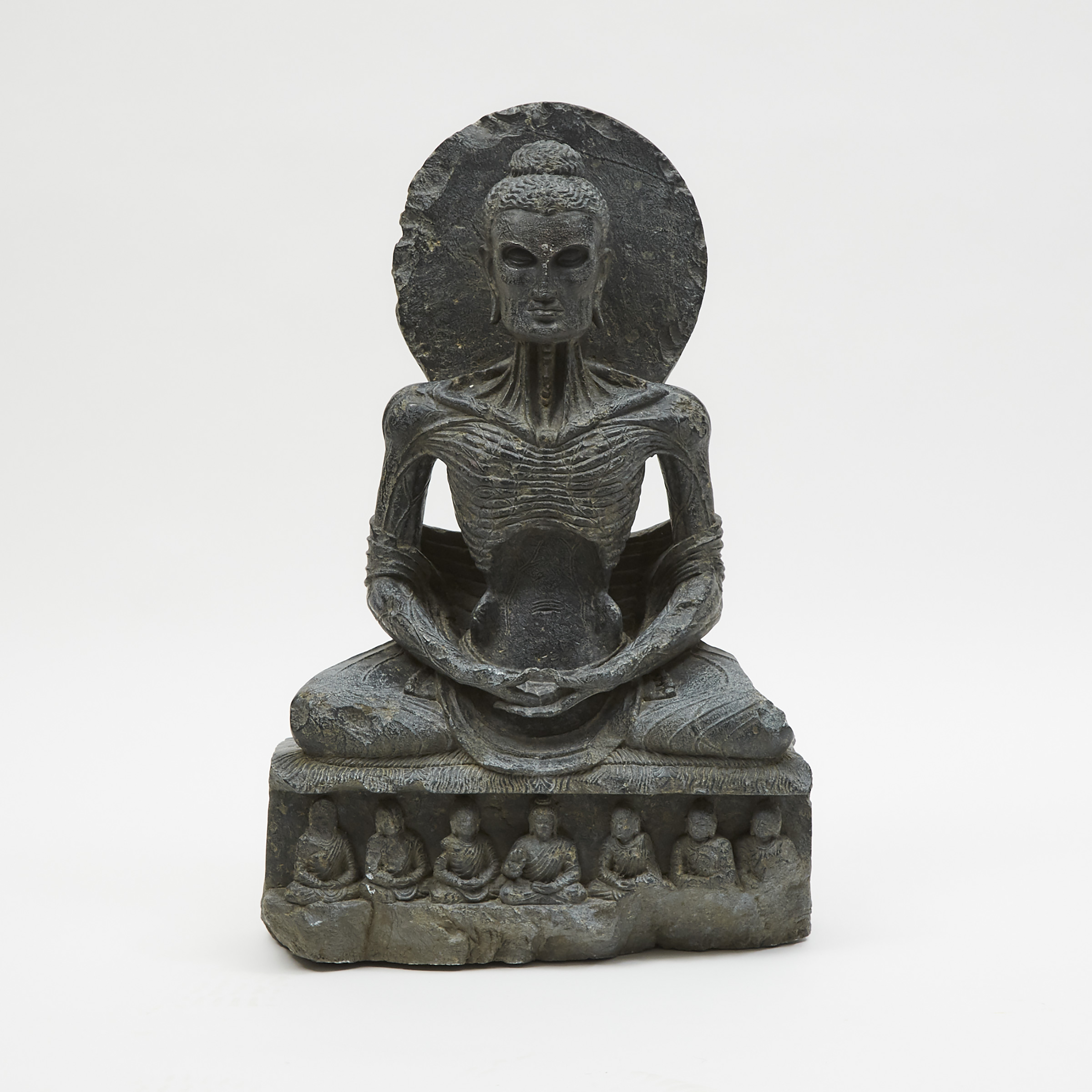


.jpg)
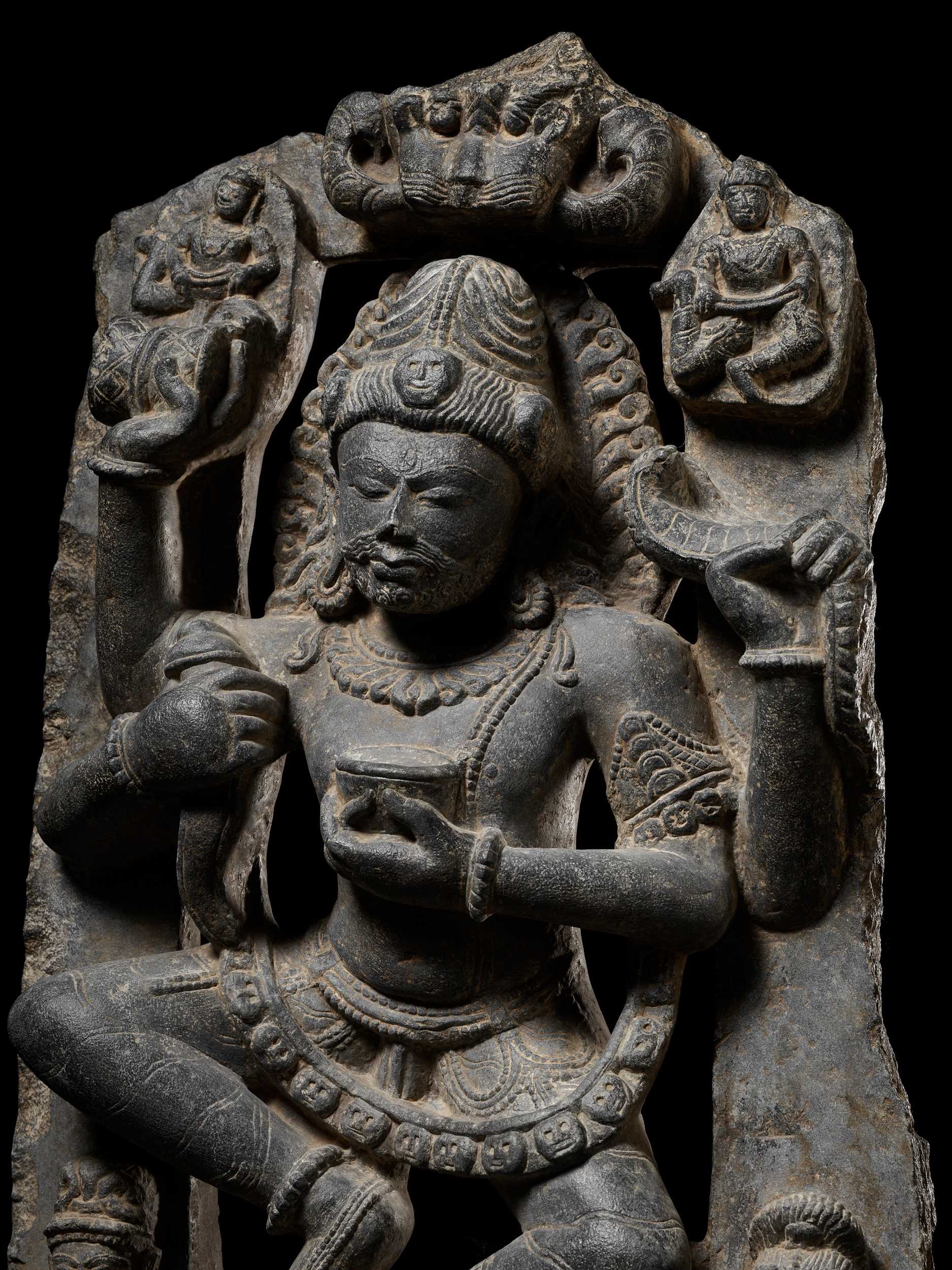


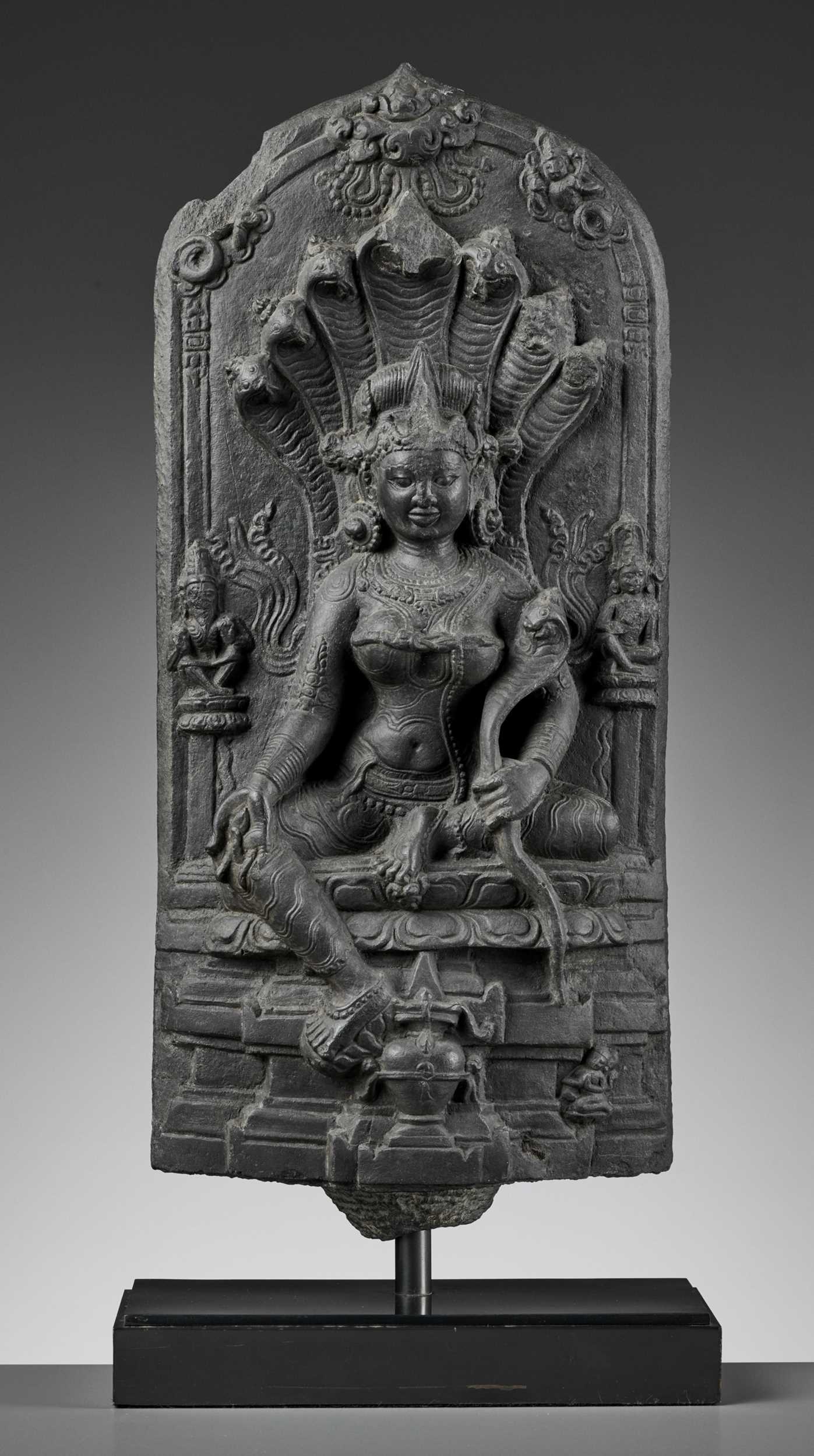
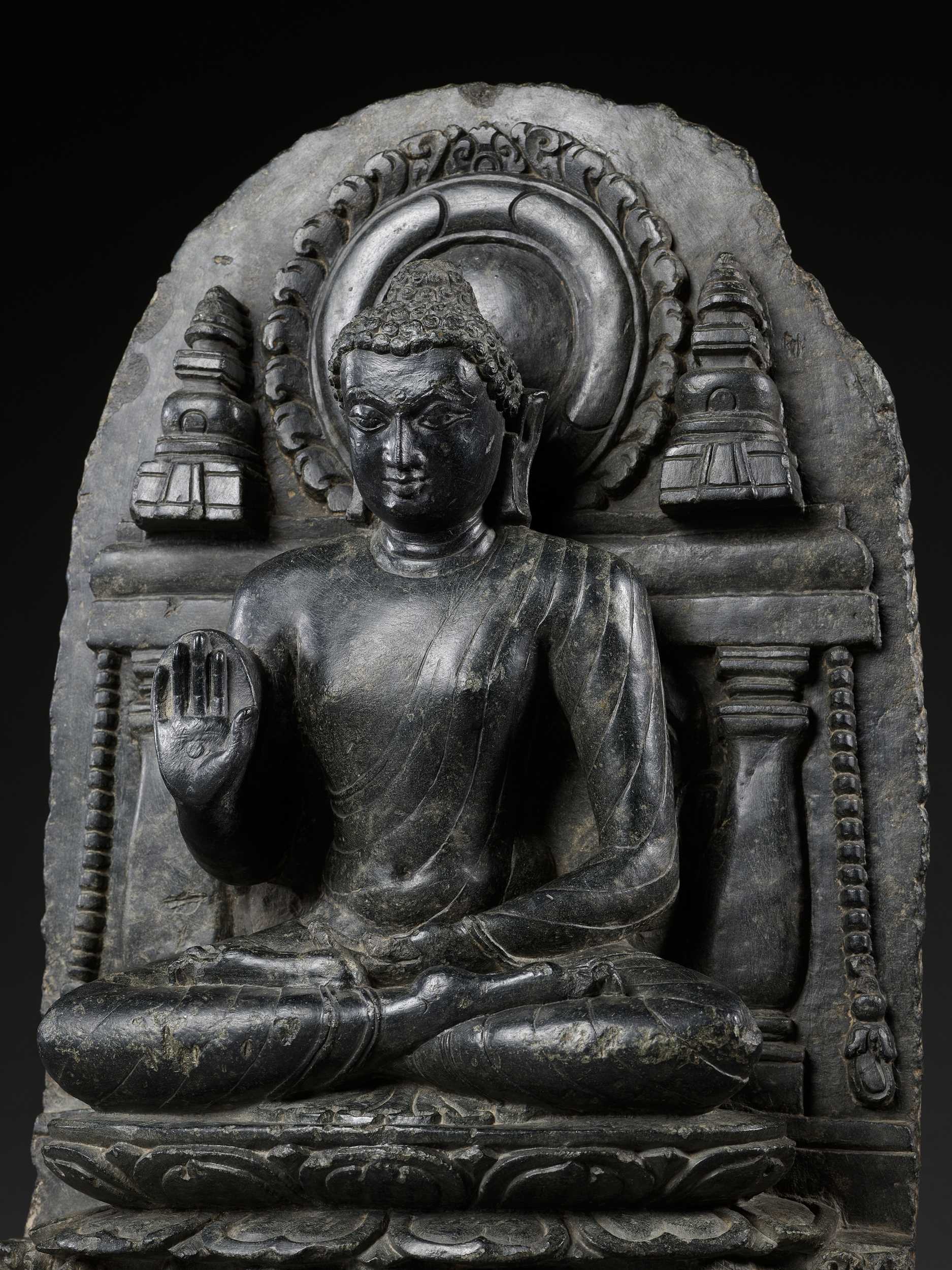
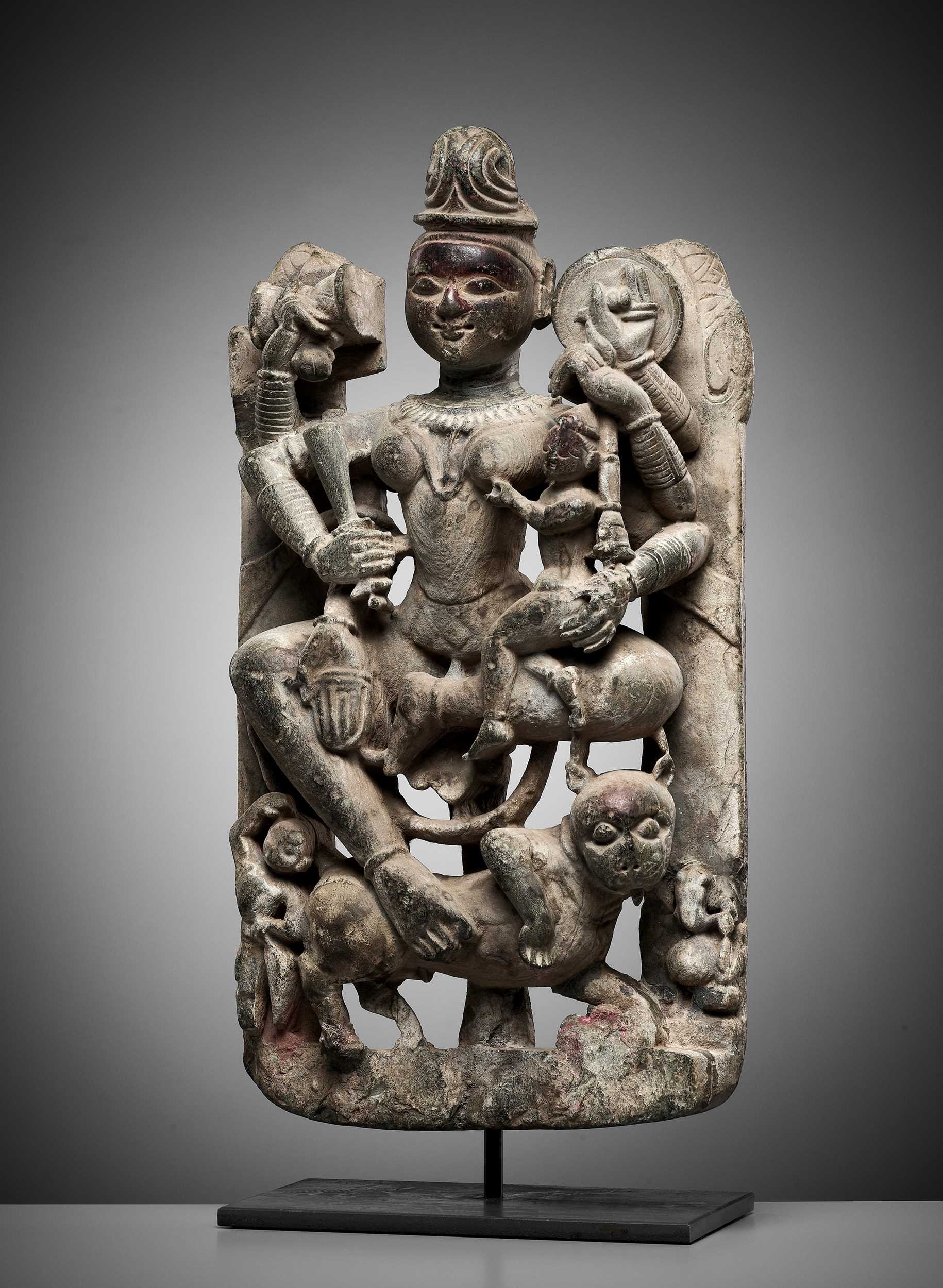
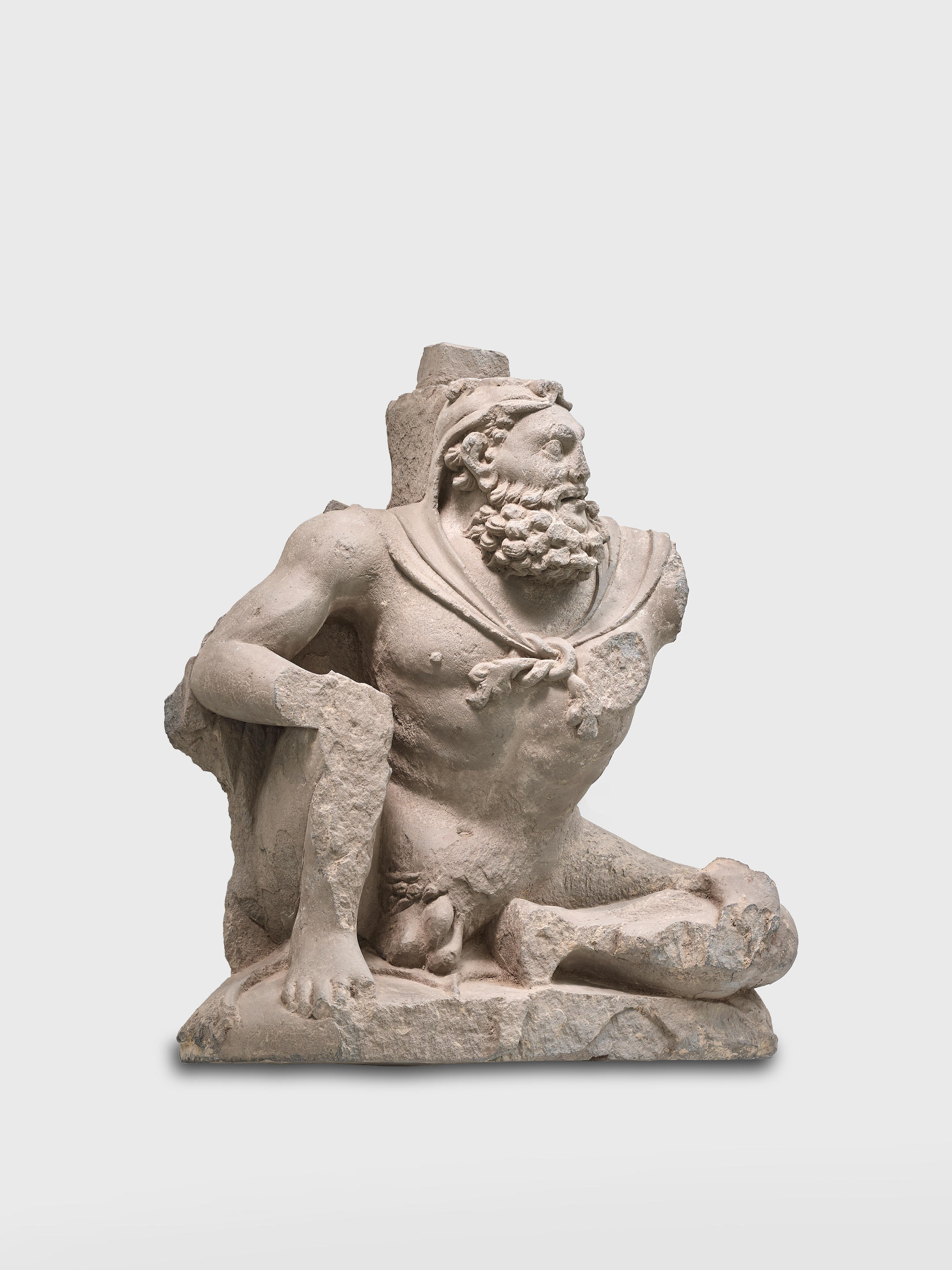
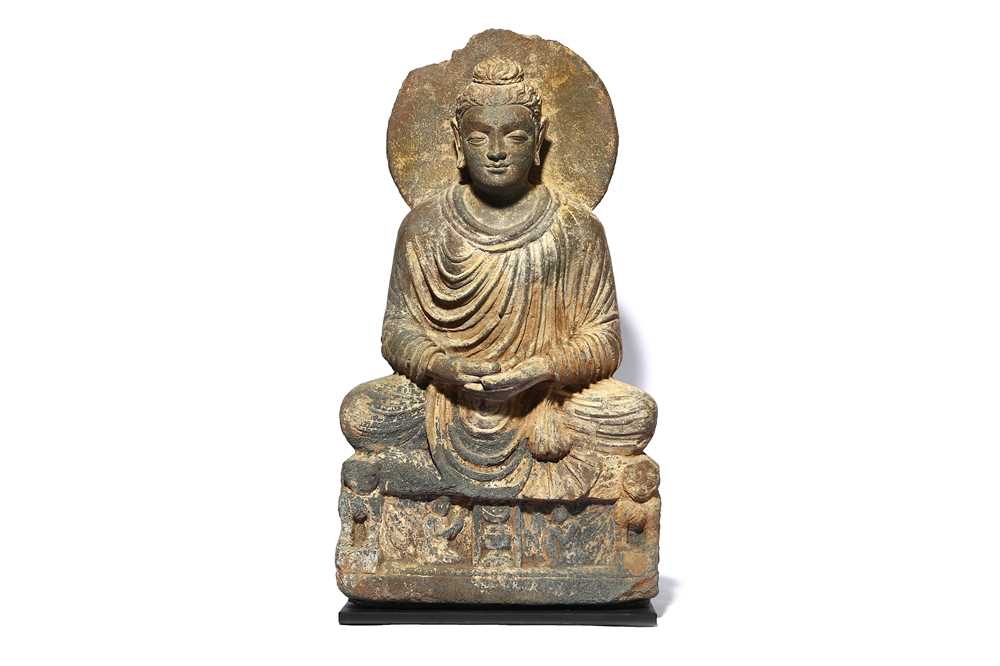
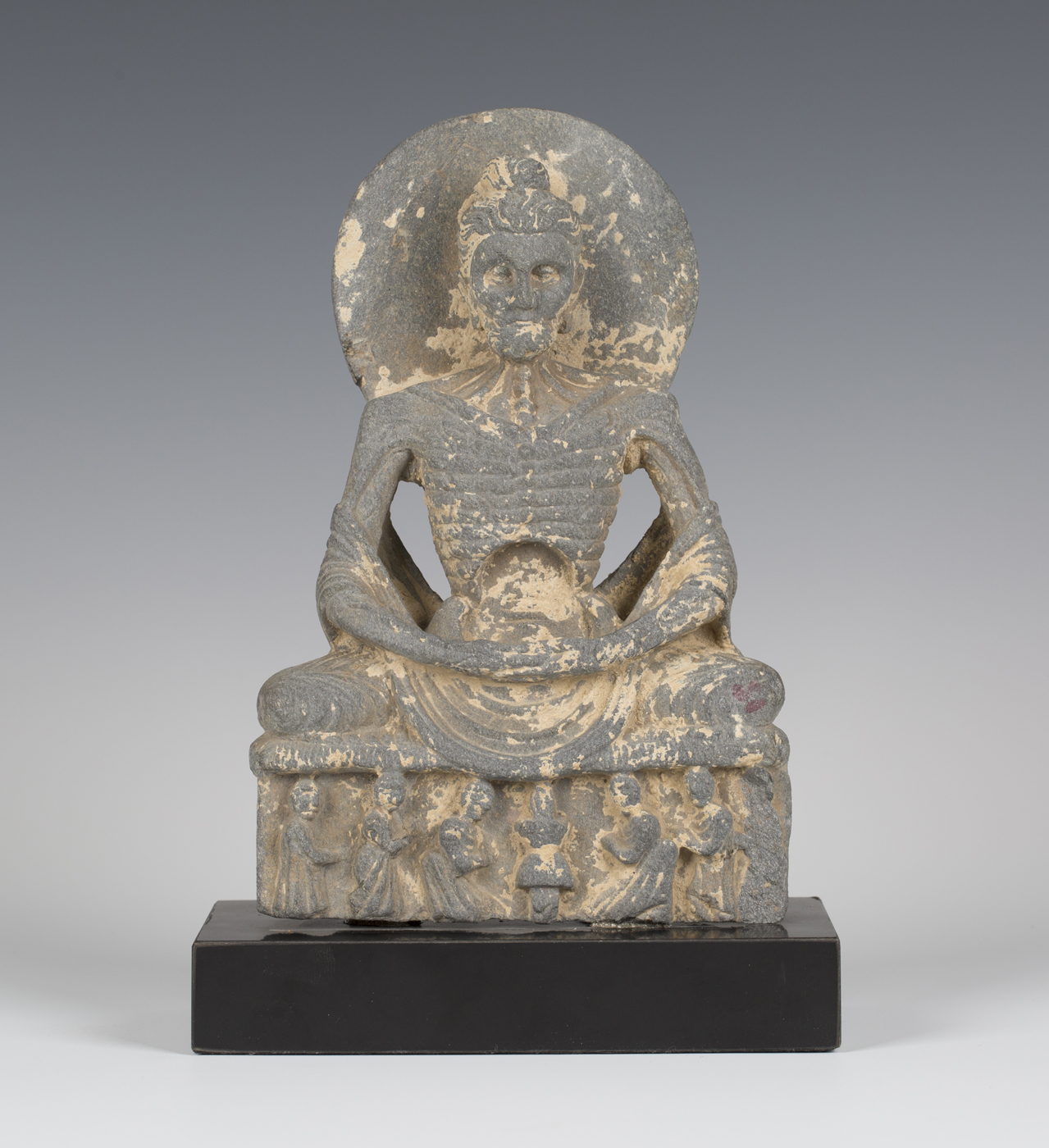

Testen Sie LotSearch und seine Premium-Features 7 Tage - ohne Kosten!
Lassen Sie sich automatisch über neue Objekte in kommenden Auktionen benachrichtigen.
Suchauftrag anlegen